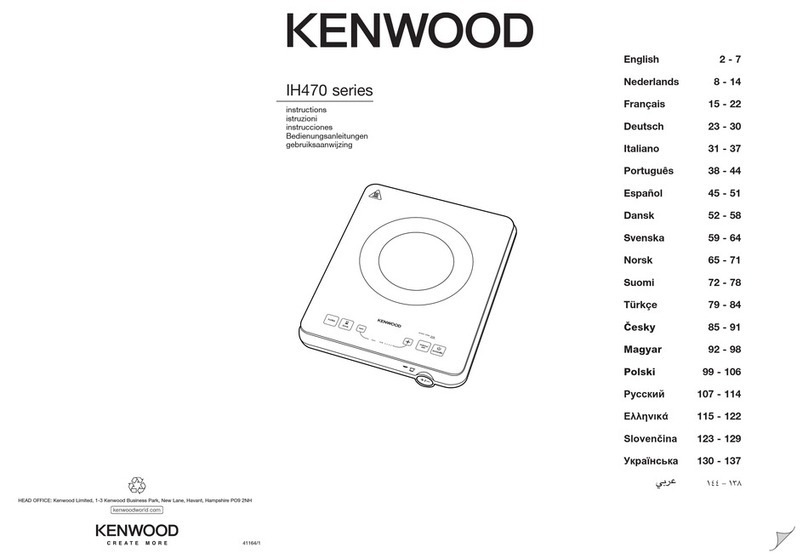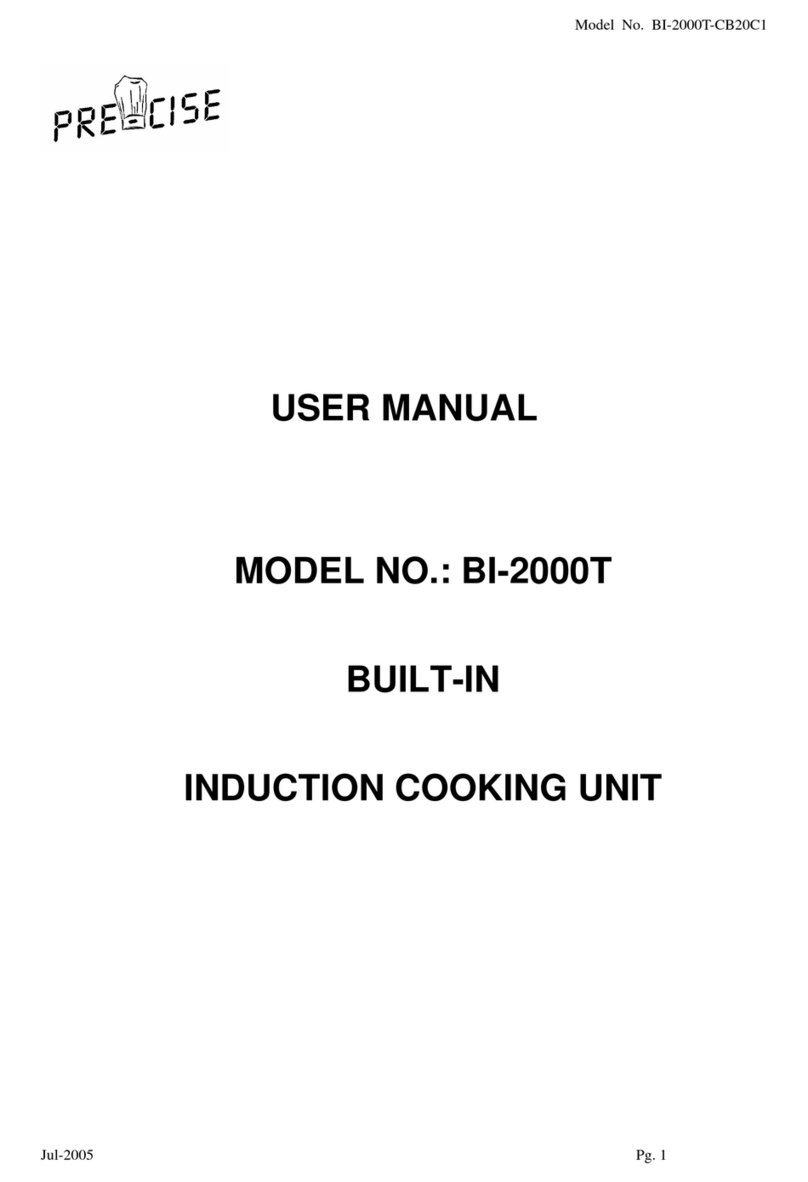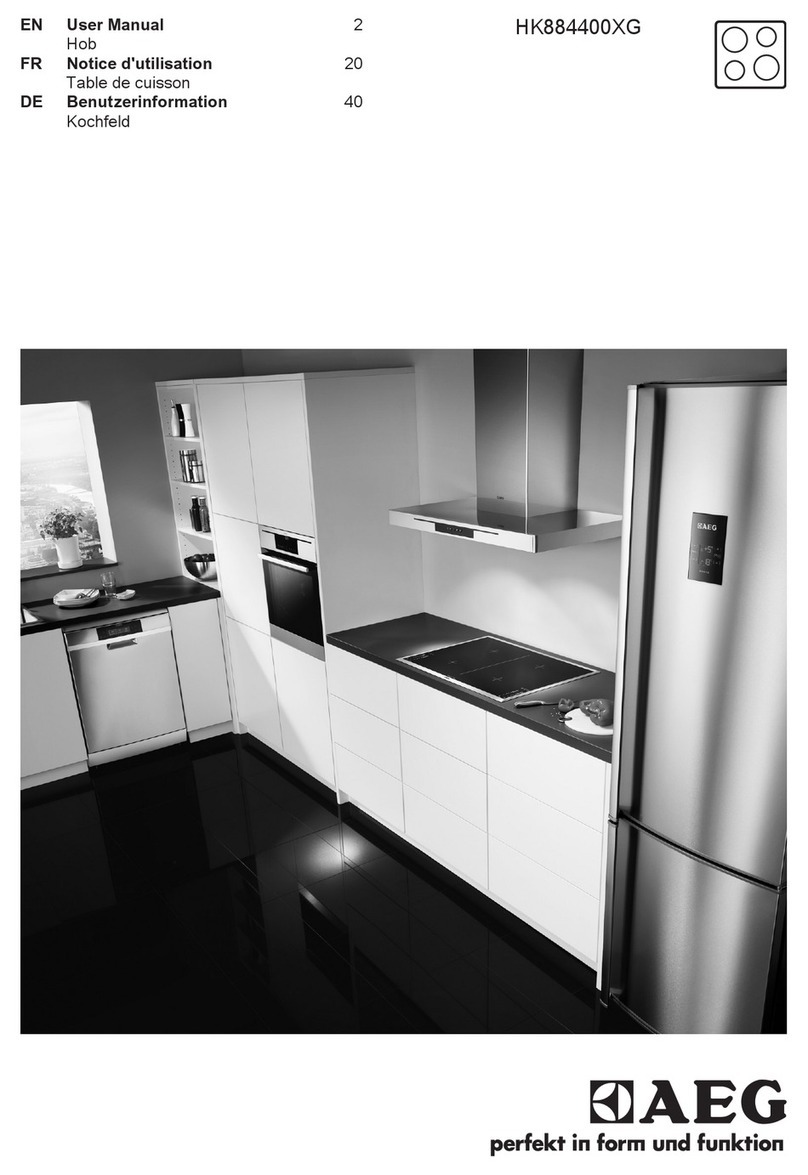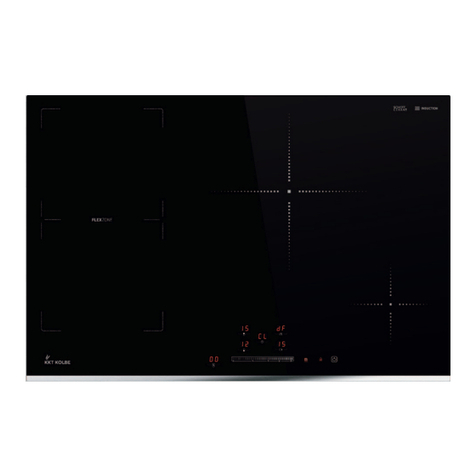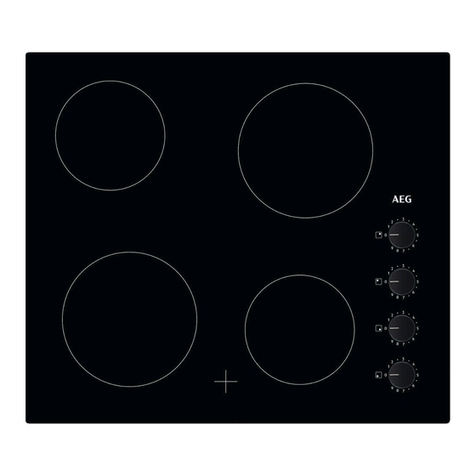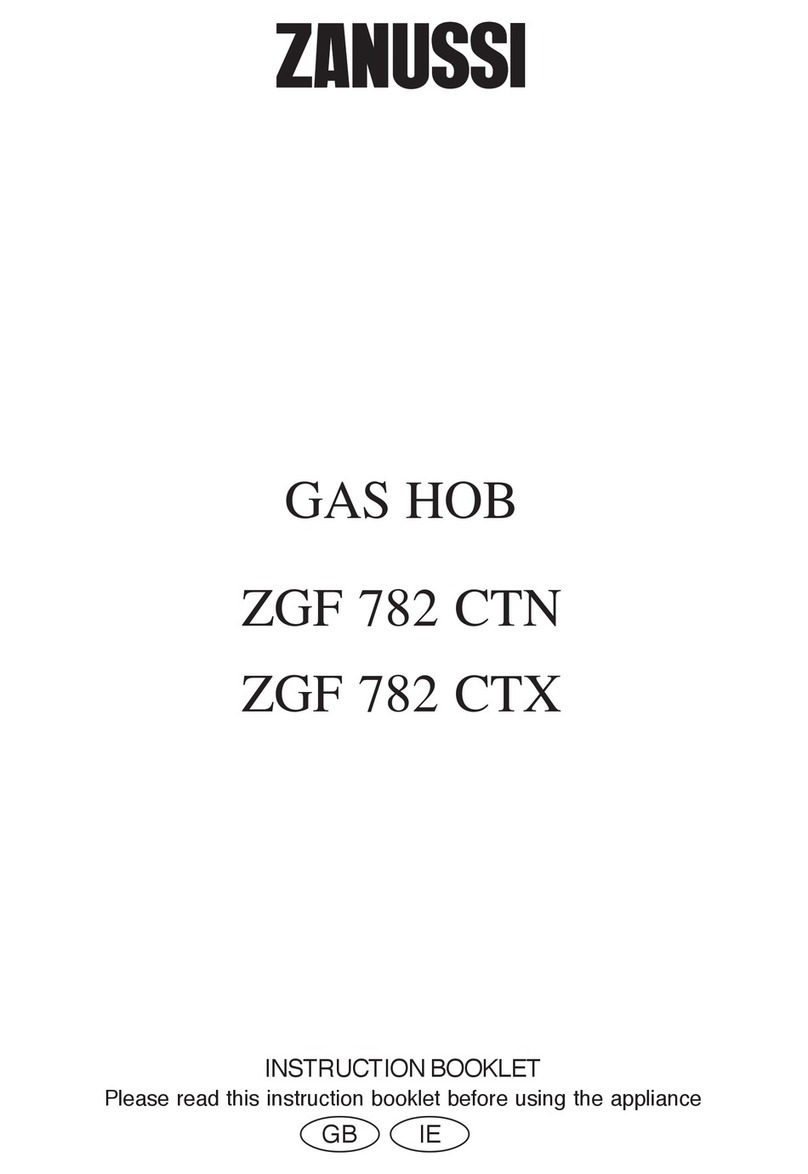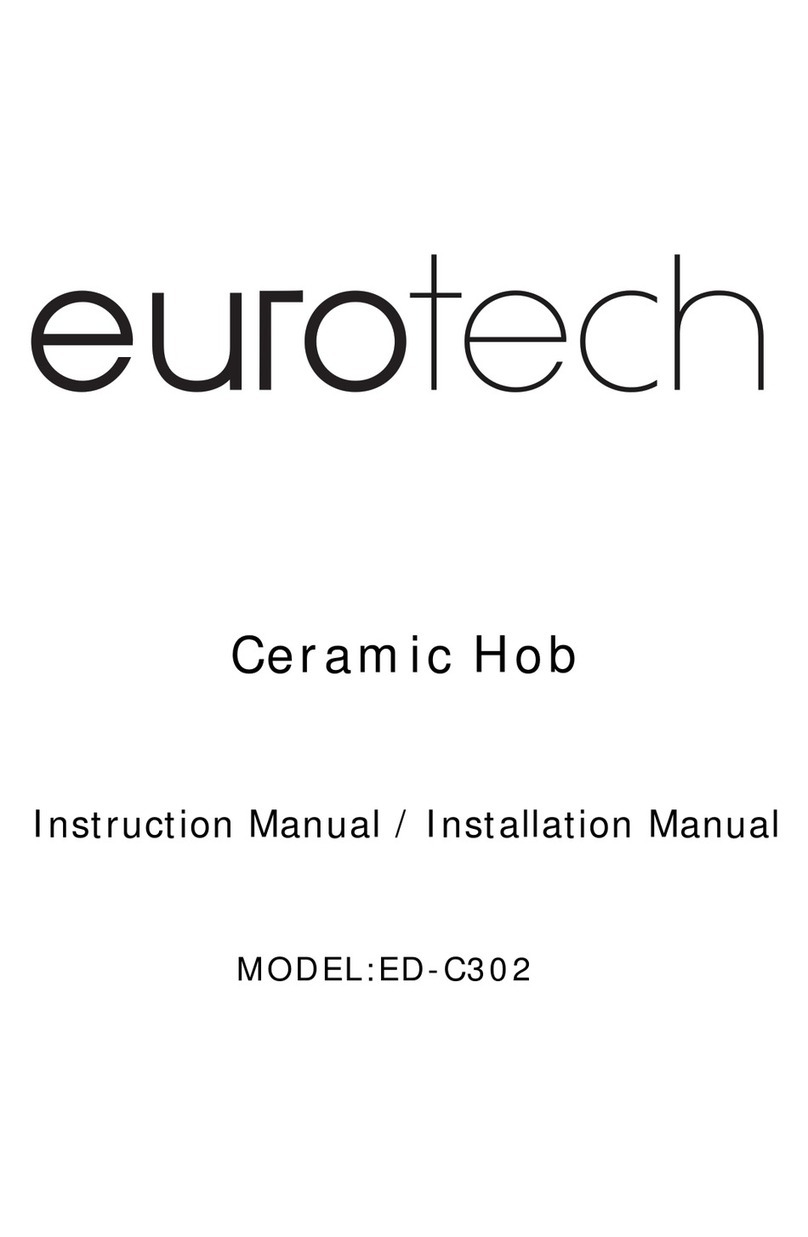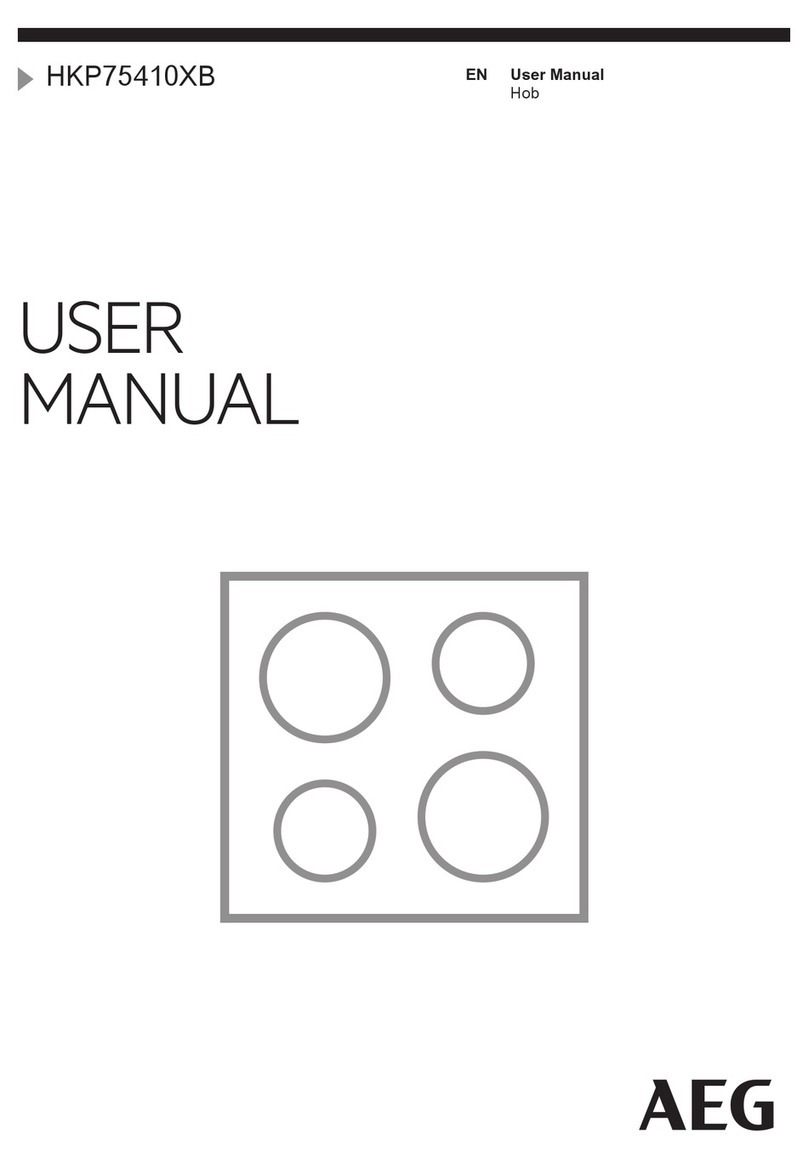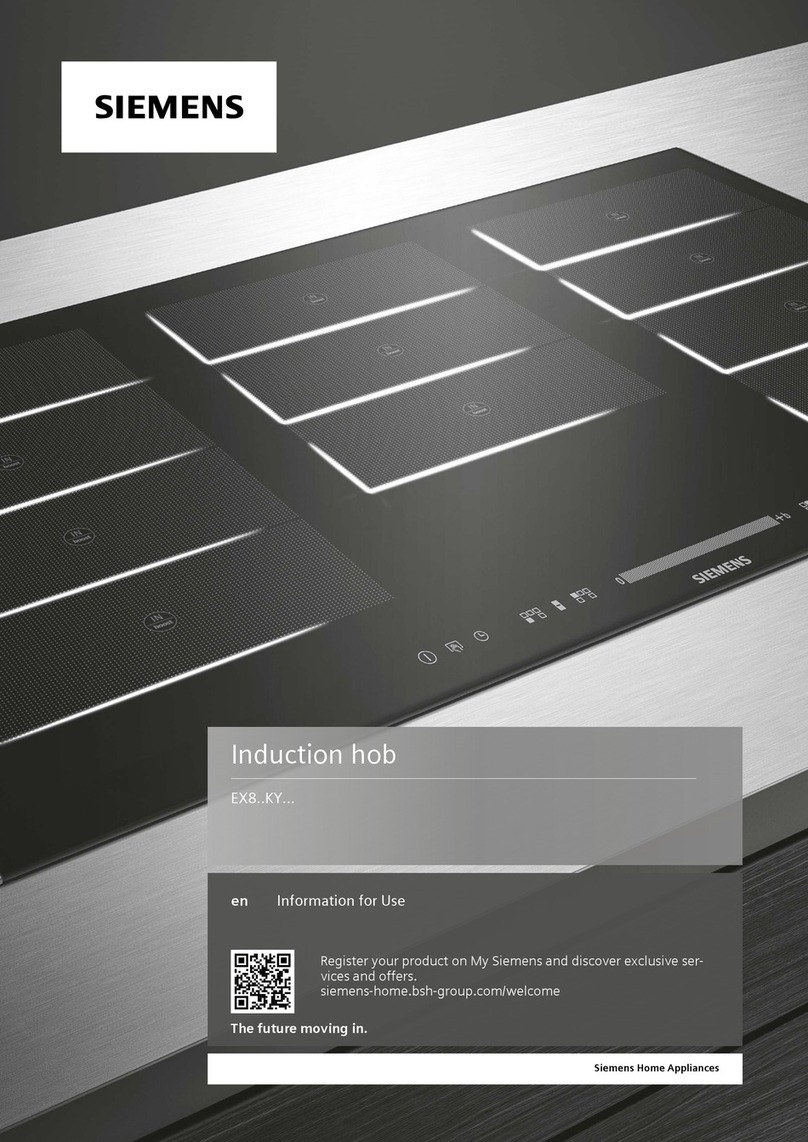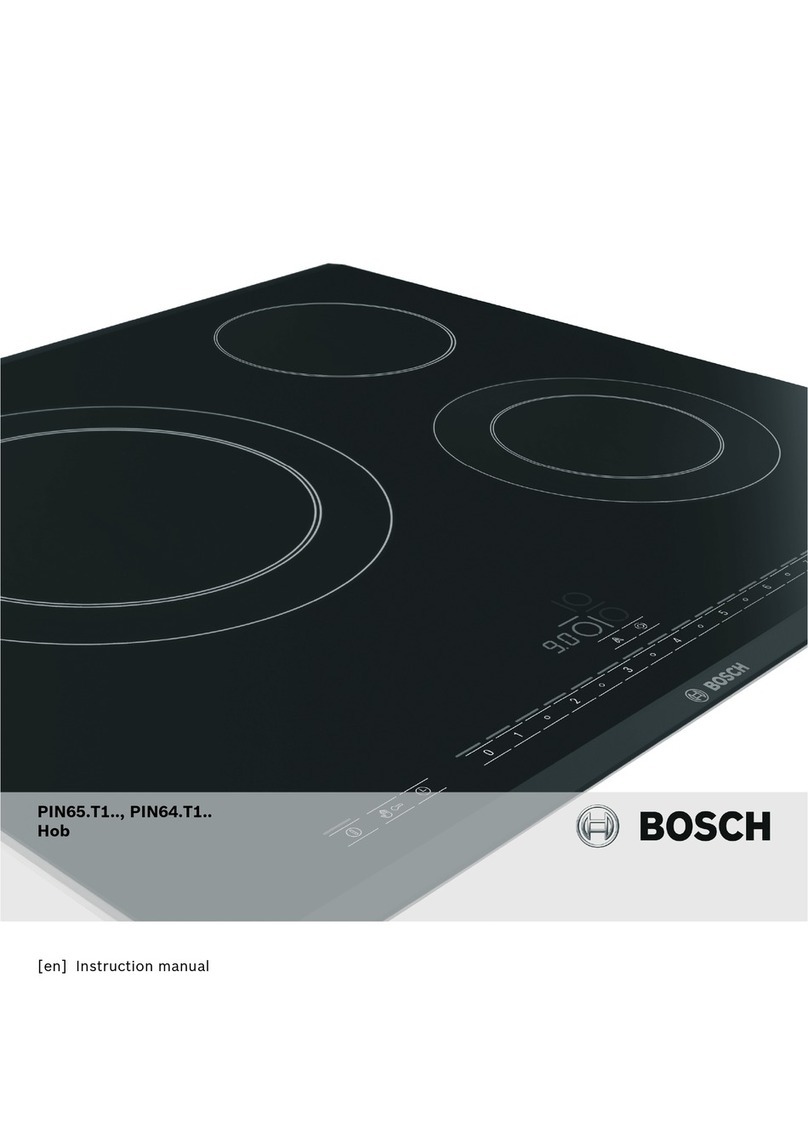BEFORE USING FOR THE FIRST TIME
Read the instructions carefully before installing and using the appliance.•
After unpacking the appliance, make sure it is not damaged. In case of doubt, do not•
usetheapplianceandcontactyoursupplieroraqualiedengineer.
Remove all packaging and do not leave the packing material (plastic bags, polyst-•
yrene, bands etc ) in easy reach of children as they may cause serious injury. The
packaging materials are recyclable.
The appliance should be installed and all the gas/electrical connections made by a•
qualiedengineerincompliancewithlocalregulationsinforceandfollowingthema-
nufacturer’s instructions.
Do not attempt to modify the technical properties of the appliance, as it may become•
dangerous to use.
IMPORTANT SAFEGUARDS & RECOMMENDATIONS
Donotcarryoutanycleaningormaintenancewithoutrstdisconnectingtheappliance•
from the electrical supply.
During and after use of the hob, certain parts will become very hot. Do not touch hot•
parts.
After use always ensure that the control knobs are in the “• ” OFF position.
Keep children away from the hob during use.•
Household appliances are not intended to be played with by children.•
Children, or persons with a disability which limits their ability to use the appliance,•
should have a responsible person to instruct them in its use. The instructor should
be satised that they can use the appliance without danger to themselves or their
surroundings.
WARNING•
When correctly installed, your product meets all safety requirements laid down for this
type of product category. However special care should be taken around the underne-
ath of the appliance as this area is not designed or intended to be touched and may
contain sharp or rough edges, that may cause injury.
Fire Risk!• DonotleaveinammablematerialsontheHobtop.
Make sure that electrical cords connecting other appliances in the proximity cannot•
come in to contact with the Hob top.
Never use a damaged appliance. Get it checked or repaired: “see after-sales servi-•
ce”.
CAUTION: If the burner is accidentally extinguished, turn the gas off by the control•
knob and wait for at least 1 minute before attempting to relight.
CAUTION: this appliance must only be installed in a permanently well ventilated room•
in compliance with the applicable regulations.
When the appliance is not being used, it is advisable to keep the gas tap closed.•
Regularlubricationofthegastapsmustonlybecarriedoutbyqualiedengineers.•
Contact Service in case of problems with the operation of the gas taps.
Before disposing of an unwanted appliance, it is recommended that it is made inope-•
rative and that all potentially hazardous parts are made harmless.
Important: This appliance has been designed for domestic use only. The appliance•
is NOT suitable for use within a semi-commercial, commercial or communal environ-
ment.
If the supply cord is damaged, it must be replaced by a special cord by a quali-•
ed electrical technician in order to avoid a hazard.




